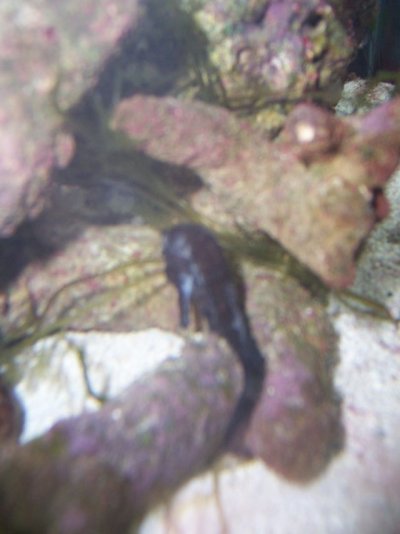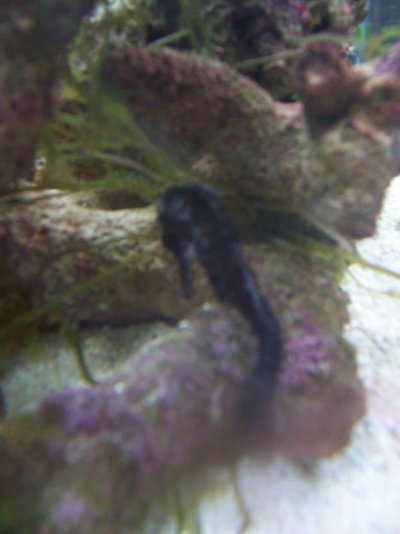I am having a problem with some flaking of the skin on my SH. It is only affecting one of them. According to seahorse.org it looks like flesh erosion caused by vibrio. Here is some of the facts I gave these facts to them for you to see. Any advice will help. Where are you at Sadielynn? Thanks
1. One SH has a flaking of white stuff coming of it and is around the head and back area. It is breathing rapidly and not eating this evening. Was eating earlier.
2. View my tank in signature for pic of SH and equipment.
3. Ammonia and Nitrite at 0. Nitrates are at 20. Salinity at 1.023. PH is 8.2
4. I have had them about 2 or three months
5. They are captive bred.
6. I got it at the LFS. Acclimated to my tank in 3 hrs.
7. It was eating Mysis. That is thje only thing I have fed since I have had it. Feed twice a day.
Here are some pics sorry about them being blurry. but you can still see the flaking. I went to Petsmart which is the only store open tonite and they did not have any furan 2 but I did get some triple sulfa which is an anti bacterial. Will this be OK to use.
1. One SH has a flaking of white stuff coming of it and is around the head and back area. It is breathing rapidly and not eating this evening. Was eating earlier.
2. View my tank in signature for pic of SH and equipment.
3. Ammonia and Nitrite at 0. Nitrates are at 20. Salinity at 1.023. PH is 8.2
4. I have had them about 2 or three months
5. They are captive bred.
6. I got it at the LFS. Acclimated to my tank in 3 hrs.
7. It was eating Mysis. That is thje only thing I have fed since I have had it. Feed twice a day.
Here are some pics sorry about them being blurry. but you can still see the flaking. I went to Petsmart which is the only store open tonite and they did not have any furan 2 but I did get some triple sulfa which is an anti bacterial. Will this be OK to use.


